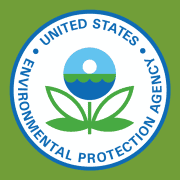EPA’s Clean Power Plan Lies Undermine Congressional Oversight

 Earlier this December, the Environmental Protection Agency released all the work it has performed on “Model Rules” for the Clean Power Plan. The purpose of the model rules is twofold: 1) they provide a template for states who voluntarily seek to comply with the rule; and 2) they function as the federal plan that the EPA would impose on non-compliant states.
Earlier this December, the Environmental Protection Agency released all the work it has performed on “Model Rules” for the Clean Power Plan. The purpose of the model rules is twofold: 1) they provide a template for states who voluntarily seek to comply with the rule; and 2) they function as the federal plan that the EPA would impose on non-compliant states.
Of course, with the election of Donald Trump, the Clean Power Plan is almost certainly doomed. But the release of the Model Rules is nonetheless instructive, for it demonstrates the extent of EPA’s duplicity during the Obama administration.
According to the EPA, “the proposed Model Rules highlighted straightforward pathways to adopting a trading system, making it easy for states and power plants to use emissions trading to reduce carbon pollution.” This “trading system” also goes by a much more common name: cap-and-trade. To be clear, the agency proposes that states either voluntarily adopt cap-and-trade or have the federal government impose cap-and-trade.
What makes the agency’s reliance on a “trading system”/cap-and-trade so remarkable is that it flatly contradicts repeated statements by EPA officials to Congress.
For example, then-EPA administrator Lisa Jackson told Rep. Steve Scalise (R-LA) during a February 9, 2011 hearing that “There is no cap and trade scheme provided for under the Clean Air Act … Sir, what I do know is that we are not planning any cap and trade regulations or standards.”
And during a March 2014 Senate hearing, EPA Administrator Gina McCarthy told Sen. Heidi Heitkamp (D-ND), “[the Clean Power Plan] is not a cap and trade program. It’s not going to be designed like a cap and trade program … That’s not what it looks like.”
Most recently, during a House Energy & Commerce Committee on October 7, 2015, EPA Office of Air and Radiation chief Janet McCabe told Rep. David McKinley (R-WV), “the Clean Power Plan does not set in place a cap-and-trade program.”
Quite plainly, these top-ranking EPA officials lied through their teeth. They all told Congress that the EPA’s climate regulations have nothing to do with a cap-and-trade, when, in fact, the agency’s foremost climate rule would impose a cap-and-trade on unwilling states.
Alas, this is only the tip of the iceberg. For example, EPA Administrator Gina McCarthy routinely claims in congressional testimony that the rule is the result of “unprecedented” outreach to and cooperation with the states; in reality, the rule was crafted by three lobbyists at the Natural Resources Defense Council, and a record 28 states are suing the agency over the regulation. Like a broken record, she claims the rule would be “flexible”; in practice, states can either voluntarily adopt a cap-and-trade system or have the EPA impose a cap-and-trade system.
Obviously, it’s sub-optimal when public servants refuse to be forthright with Congress and the American people. But EPA’s mendacity is worse than an absence of ethics, because it undermines congressional oversight of the agency. Remember, EPA is a creature of Congress. All of the agency’s power emanates from statutes passed by Congress. And the agency’s budget is a function of Congress’s power of the purse. If things worked the way they were intended, then Congress would oversee the agency it created, in order to ensure that the agency adhered to the rule of law. To wit, the reason that the lawmakers cited above (i.e., Rep. Scalise, Sen. Heitkamp, and Rep. McKinley) were so keen on asking about EPA’s intentions regarding a cap-and-trade is because the Congress repeatedly has rejected cap-and-trade legislation over the last decade. These lawmakers wanted to know whether EPA was trying to impose what the Congress had refused to enact. Such oversight efforts are subverted when EPA refuses to tell the truth.
In sum, Congress’s primary means of investigation are hearings and follow up questions, but these mechanisms are rendered meaningless when the agency lies.